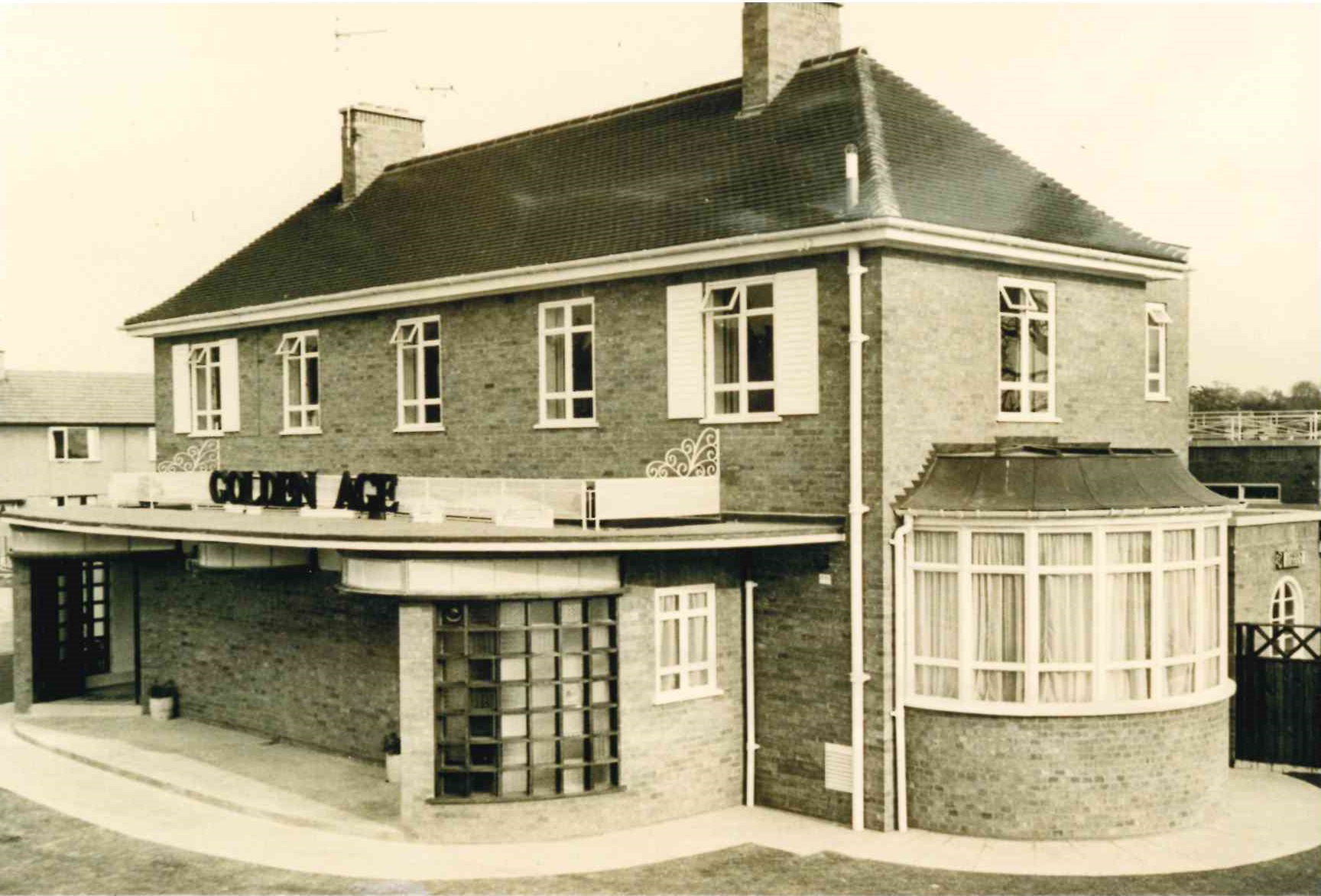- VJ75 Day, 15th August 2020 marks the 75th anniversary of victory over Japan and the end of World War II
- In 1941, Japan, Germany’s ally, invaded Malaya. The 1st Leicestershire Regiment defended the town of Jitra but were finally forced to retreat across hostile jungle. Many were killed or captured
- As part of a campaign to honour the soldiers, memories, a memorial is being created that will be placed on the Peace Walk in Victoria Park
Leicester and Leicestershire Soldiers in the Far East, 1941-45
VJ75 Day, 15th August 2020, marked the 75th anniversary of Victory over Japan and the end of World War II. Many from Leicester and Leicestershire served in the Far East campaigns against Japan and its allies.

In 1941, Japan, Germany’s ally, invaded Malaya. The 1st Leicestershire Regiment defended the town of Jitra but were finally forced to retreat across hostile jungle. Many were killed or captured. On 15th February 1942, the British commander in Malaya surrendered to the Japanese. 195 men of the 1st Battalion had died in the fighting, 694 were captured and 76 were evacuated or escaped.
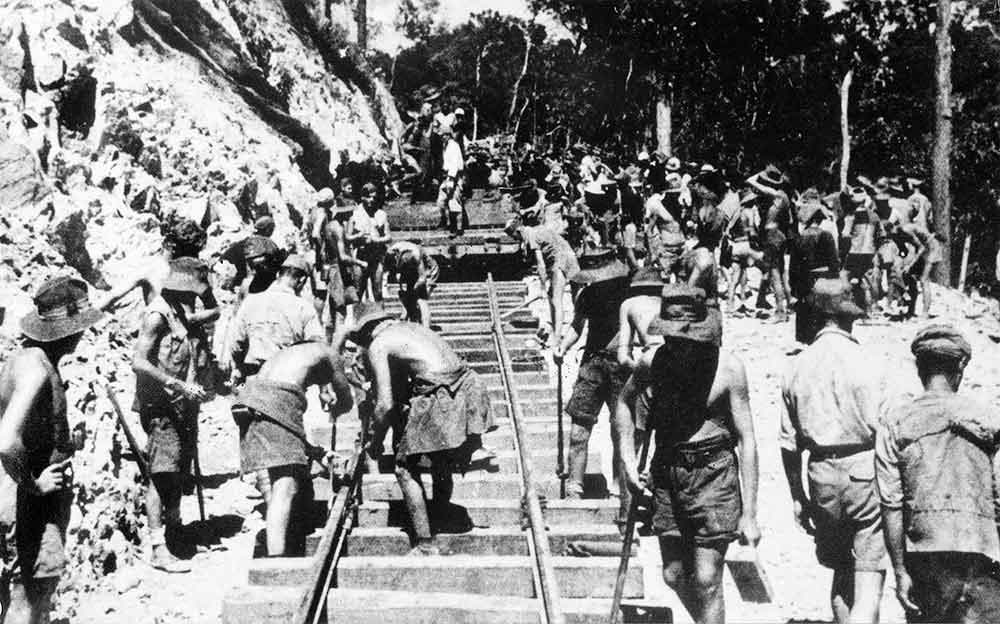
Many Leicestershire prisoners of war were sent to build the Burma railway and 106 died either through sickness, starvation or execution. When the railway was finished, many prisoners stayed to maintain and repair the line. Others went back to camps in Singapore or Japan, travelling on so-called ‘hell ships’ to work in terrible conditions.
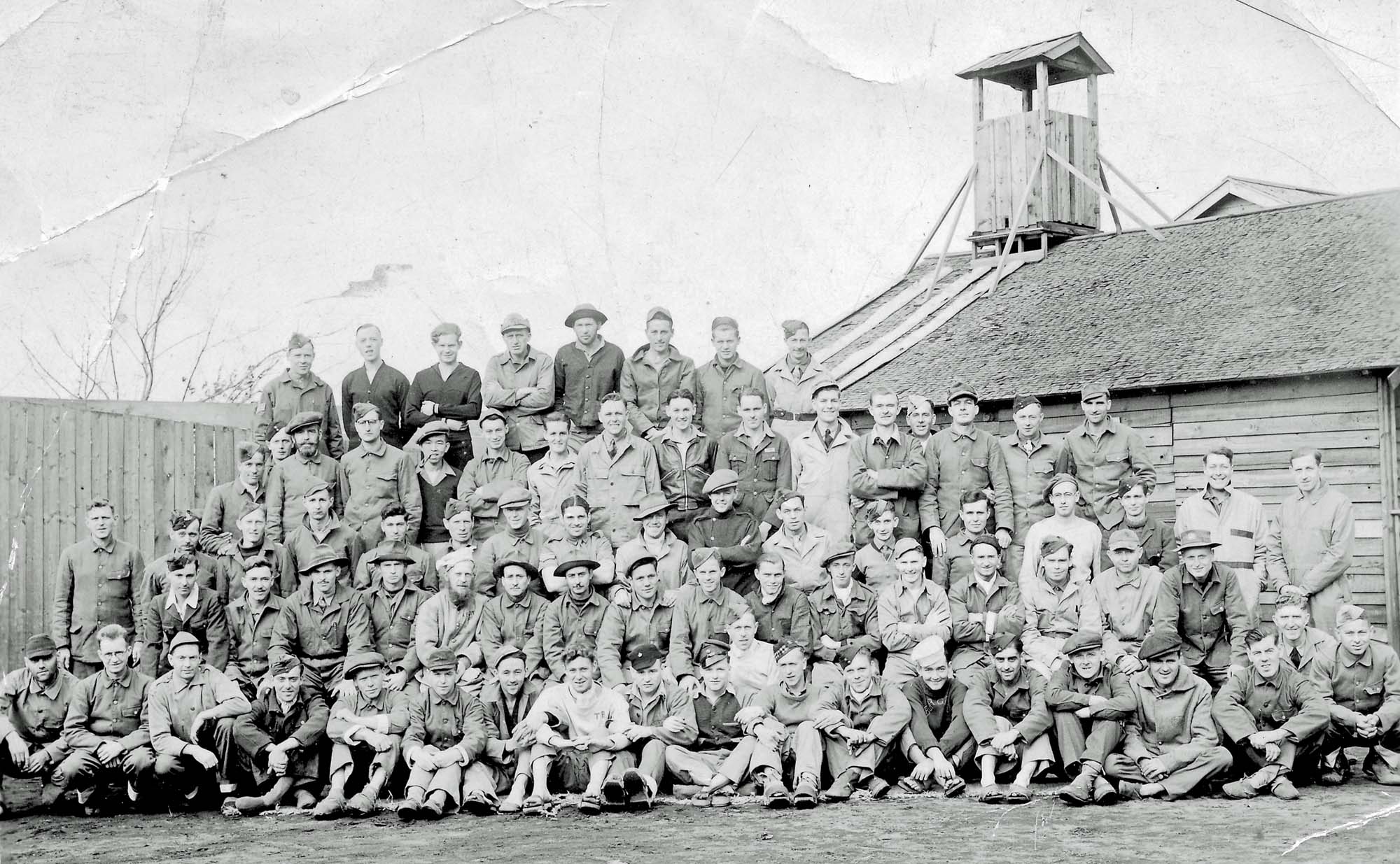
By May 1945 Japanese forces had been driven out of most of Burma. In August 1945, America dropped atomic bombs on Hiroshima and Nagasaki. On 15th August the Emperor of Japan surrendered on what is now commemorated as Victory over Japan or VJ Day.
Soldiers’ Stories
There are many powerful stories of Leicester and Leicestershire soldiers from the Far East campaigns. Here is a small selection:

Captain Henry Charles Poulter, Royal Army Service Corps
Captain Poulter was sent to Changi camp in Singapore. He was the Officer in charge of supplies and would try to find extra food to keep people alive. He collapsed just days before Singapore was freed from the Japanese and died on the voyage back to Britain at the age of 37.
One Prisoner wrote: “To officers and men alike in the P.O.W. Camp he was one of those unmentioned, unrecognised men who was indeed a hero.”
Lance Bombardier Walter Winslow, 155th Field Regiment (Lanarkshire Yeomanry) Royal Artillery
Although he lived in Leicester, Walter joined the Lanarkshire Yeomanry. In August 1941 they fought with the 1st Battalion of Leicestershire Regiment at Jitra.
Walter was left behind in the retreat and no one ever heard from him again. The official date of his death is 12 December 1941, but his body was never found. He is listed on the Singapore Memorial along with many others. Walter was aged 22 when he went missing.
Albert James Barnes, 118th Field Regiment, Royal Artillery
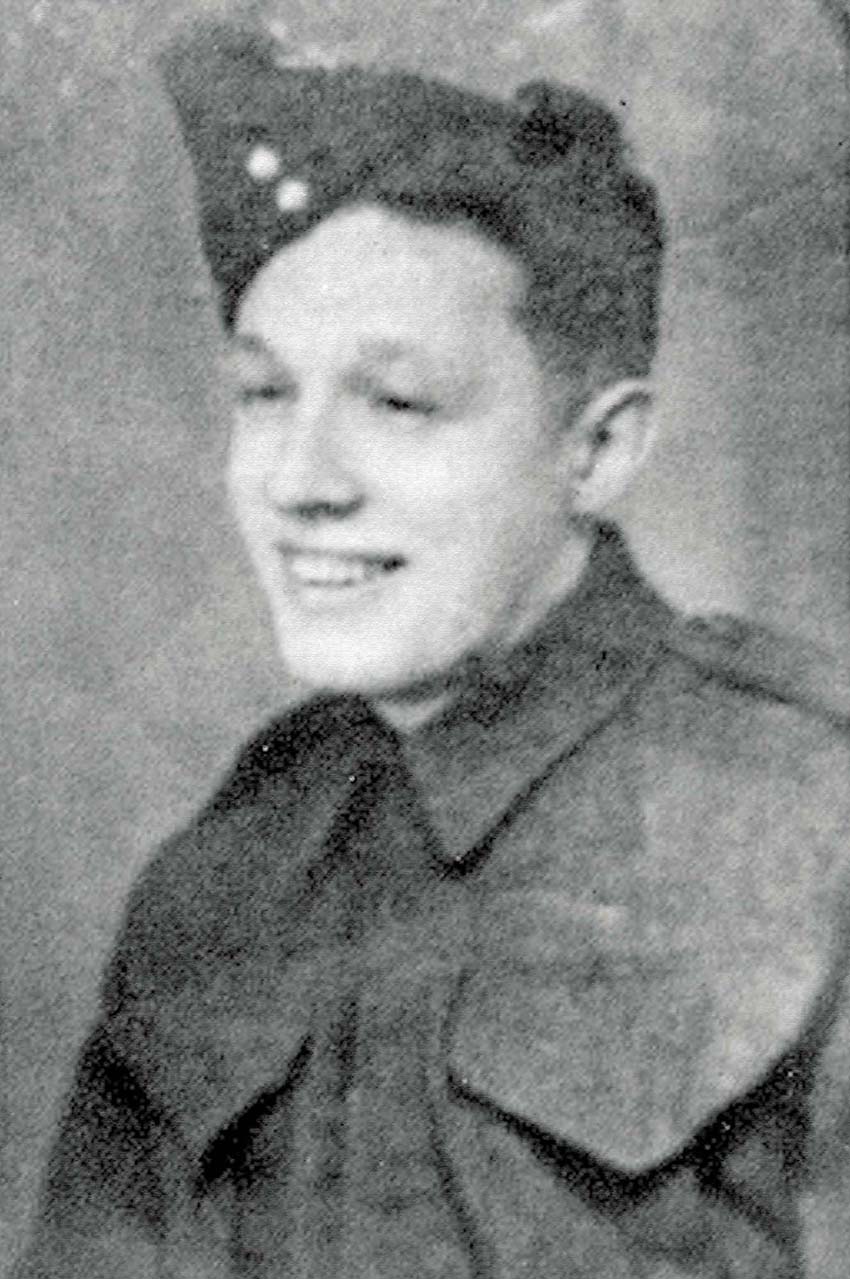
As a prisoner of war, Albert worked as a driver for two Japanese Sergeant Majors who called him ‘Baby Soldier’ as he looked so young. When Albert was working on the Burma railway, the same two officers saw him and were shocked at his poor condition. The two sergeants stormed in, assaulted the guards and brought food for Albert and his friends.
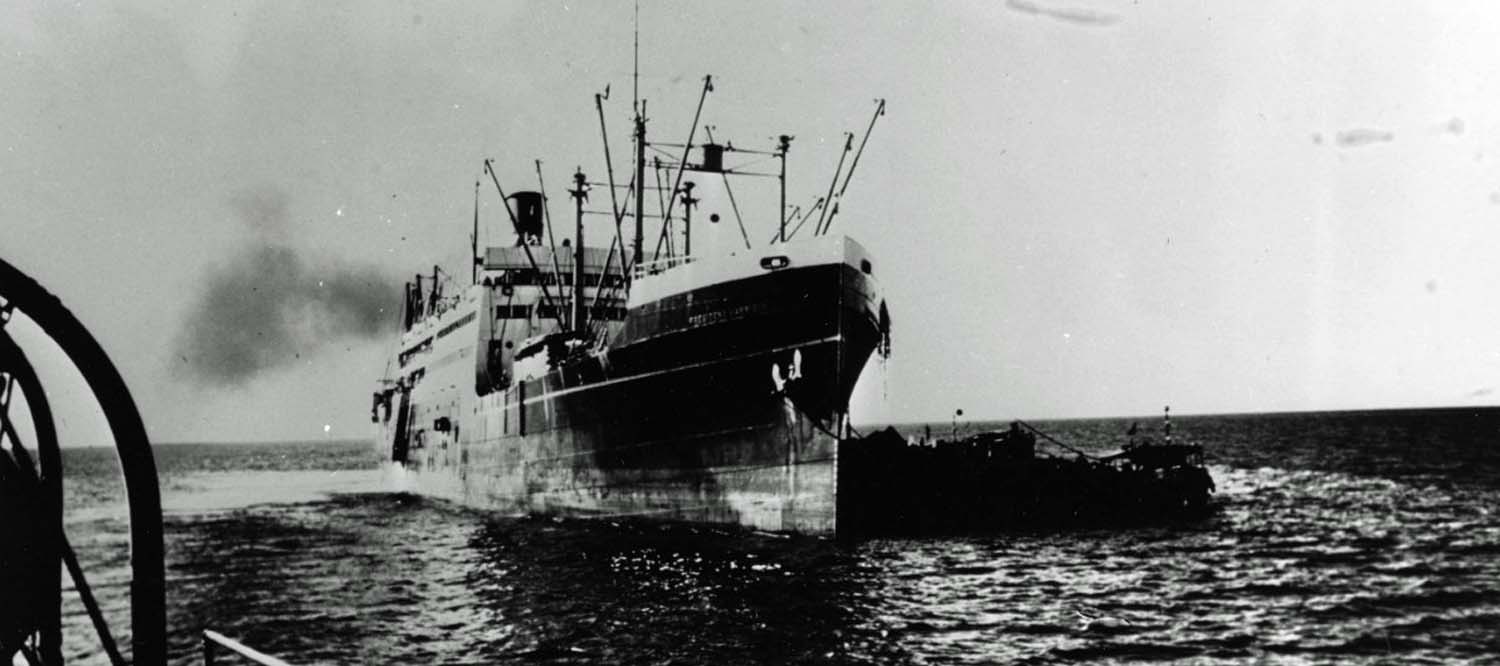
Later, Albert was on the Kachidoki Maru ‘Hell Ship’ which was torpedoed by the US submarine Pampanito. He survived and helped rescue several men and a Japanese woman with her baby.
Albert died in Leicester in 2012, aged 91.
Remembering the sacrifice
When surviving prisoners of war from the Japanese camps came home, including 537 men from the Leicestershire Regiment, they were told not to tell anyone how badly they had been treated. People wanted to put the war behind them, and the country did not care to remember.
Former Prisoners of War formed their own self-help groups. As survivors died, their relatives formed Children of the Far East Prisoners of War groups (COFEPOW) to honour the soldiers’ memories and campaign for greater recognition of their experiences. To mark VJ75, a Leicester memorial has been created for Victoria Park. It has been funded by a local COFEPOW group.
The wording for the VJ75 memorial
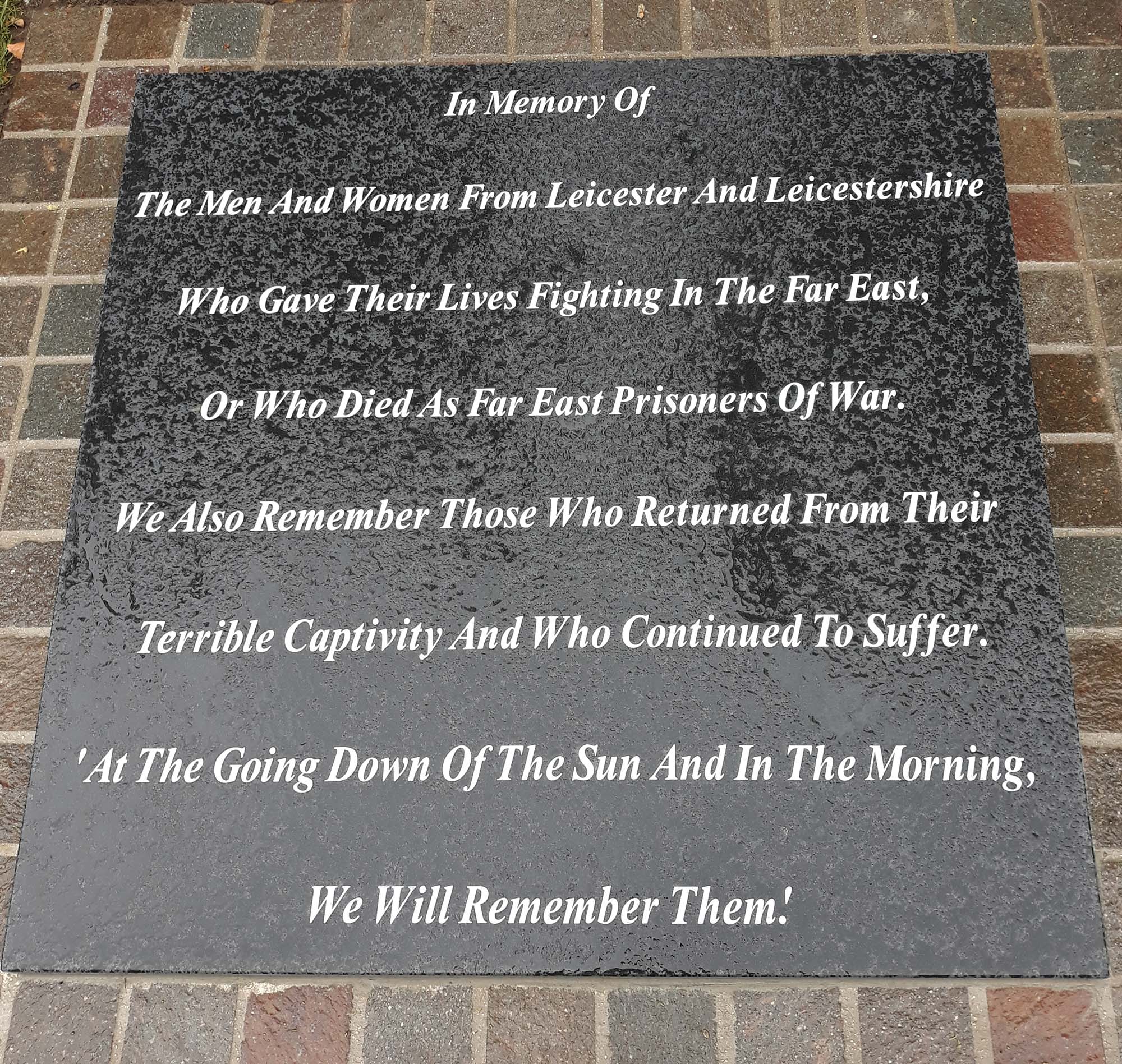
In Memory Of
The men and women of Leicester and Leicestershire
Who gave their lives fighting in the Far East,
Or who died as Far East prisoners of war.
We also remember those who returned from their
Terrible captivity and who continued to suffer.
‘At the going down of the sun and in the morning,
We will remember them.’
Gallery



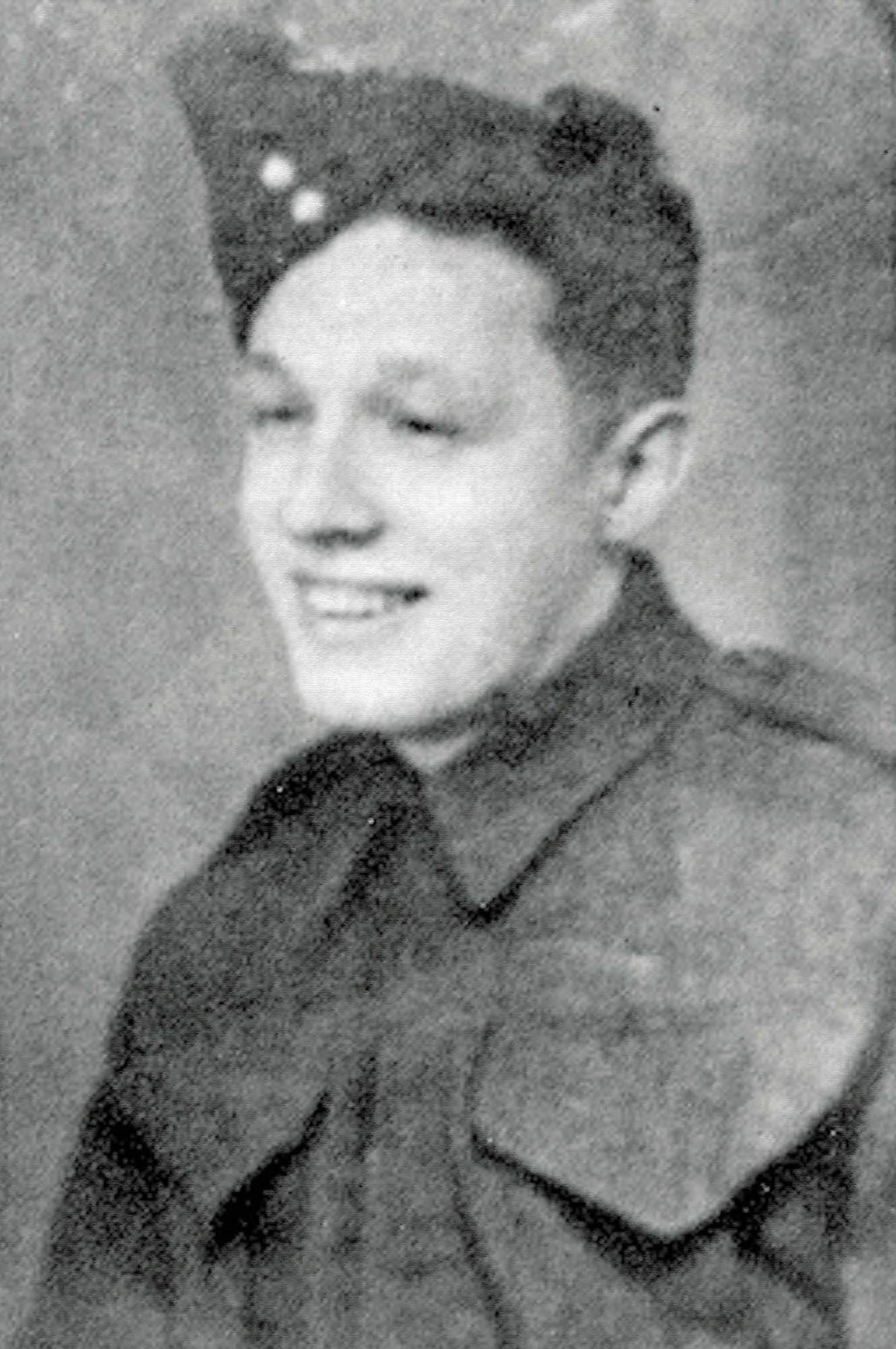


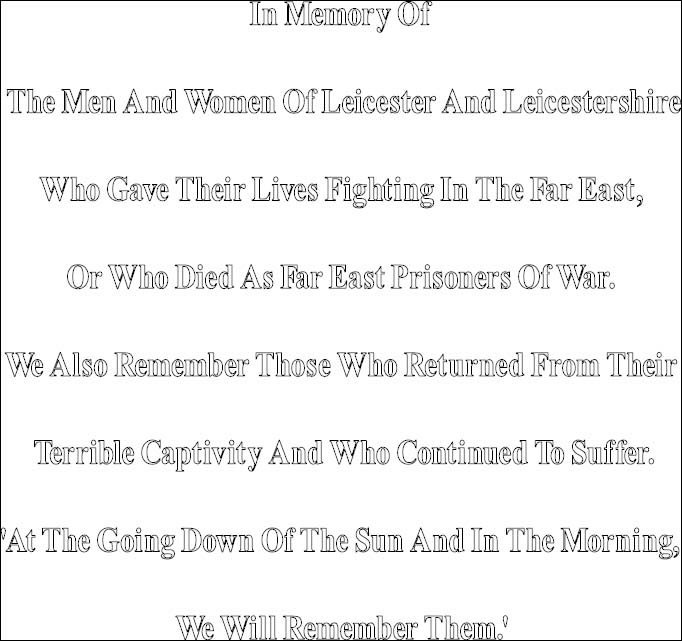

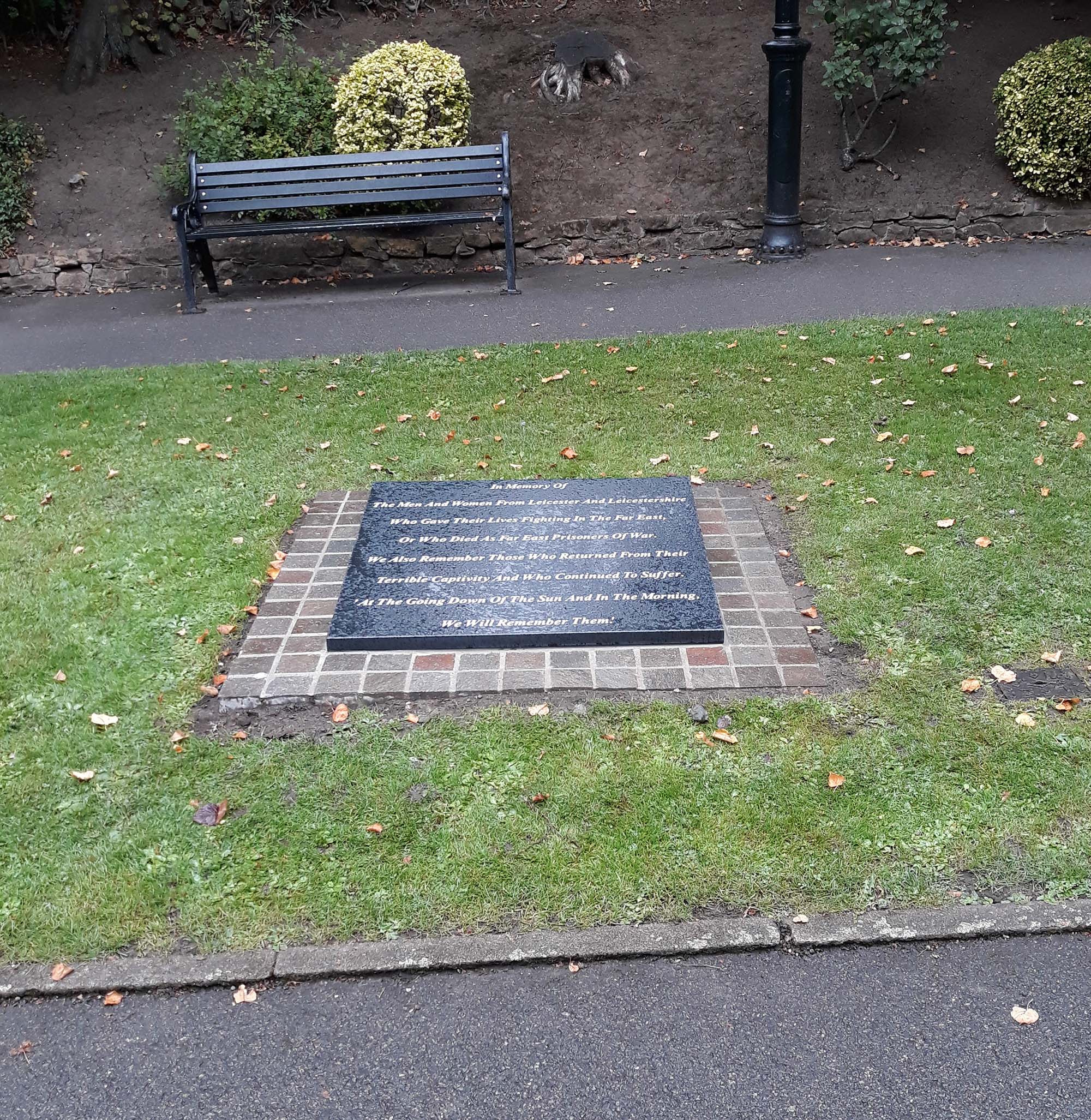
Roman Leicester
(47- 500) A military fort was erected, attracting traders and a growing civilian community to Leicester (known as Ratae Corieltauvorum to the Romans). The town steadily grew throughout the reign of the Romans.
Medieval Leicester
(500 – 1500) The early years of this period was one of unrest with Saxon, Danes and Norman invaders having their influences over the town. Later, of course, came Richard III and the final battle of the Wars of the Roses was fought on Leicester’s doorstep.
-
The Castle Motte1068

-
Leicester Cathedral1086

-
St Mary de Castro1107

-
Leicester Abbey1138

-
Leicester Castle1150

-
Grey Friars1231

-
The Streets of Medieval Leicester1265

-
Leicester Market1298

-
Trinity Hospital and Chapel1330

-
Bow Bridgecirca 1350

-
Church of the Annunciation1353

-
John O’Gaunt’s Cellar1361

-
St John's Stone1381

-
Leicester Guildhall1390

-
The Magazine1400

-
The Blue Boar Inn1400

-
The High Cross1577

Tudor & Stuart Leicester
(1500 – 1700) The wool trade flourished in Leicester with one local, a former mayor named William Wigston, making his fortune. During the English Civil War a bloody battle was fought as the forces of King Charles I laid siege to the town.
Georgian Leicester
(1700 – 1837) The knitting industry had really stared to take hold and Leicester was fast becoming the main centre of hosiery manufacture in Britain. This new prosperity was reflected throughout the town with broader, paved streets lined with elegant brick buildings and genteel residences.
-
Great Meeting Unitarian Chapel1708

-
The Globe1720

-
17 Friar Lane1759

-
Black Annis and Dane Hills1764

-
Leicester Royal Infirmary1771

-
New Walk1785

-
Freemasons’ Hall1790

-
Gaols in the City1791

-
Friars Mill1794

-
City Rooms1800

-
Development of Highfields1800

-
Wesleyan Chapel1815

-
20 Glebe Street1820

-
Charles Street Baptist Chapel1830

-
Glenfield Tunnel1832

Victorian Leicester
(1837 – 1901) The industrial revolution had a huge effect on Leicester resulting in the population growing from 40,000 to 212,000 during this period. Many of Leicester's most iconic buildings were erected during this time as wealthy Victorians made their mark on the town.
-
Leicester Union Workhouse1839

-
Campbell Street and London Road Railway Stations1840

-
The Vulcan Works1842

-
Belvoir Street Chapel1845

-
Welford Road Cemetery1849

-
Leicester Museum & Art Gallery1849

-
King Street1850

-
Cook’s Temperance Hall & Hotel1853

-
Amos Sherriff1856

-
Weighbridge Toll Collector’s House1860

-
4 Belmont Villas1862

-
Top Hat Terrace1864

-
Corah and Sons - St Margaret's Works1865

-
Kirby & West Dairy1865

-
The Clock Tower1868

-
Wimbledon Works1870

-
The Leicestershire Banking Company1871

-
St Mark’s Church and School1872

-
Victorian Turkish Baths1872

-
The Town Hall1876

-
Central Fire Stations1876

-
Aylestone Road Gas Works and Gas Museum1879

-
Gas Workers Cottages1879

-
Leicestershire County Cricket Club1879

-
Welford Road Tigers Rugby Club1880

-
Secular Hall1881

-
Development of Highfields1800

-
Abbey Park1881

-
Abbey Park Buildings1881

-
Victoria Park and Lutyens War Memorial1883

-
Leicester Fosse FC 18841884

-
Leicester Coffee and Cocoa Company Coffee Houses1885

-
St Barnabas Church and Vicarage1886

-
Abbey Pumping Station1891

-
Luke Turner & Co. Ltd.1893

-
West Bridge Station1893

-
Thomas Cook Building1894

-
Alexandra House1897

-
Leicester Boys Club1897

-
Grand Hotel and General Newsroom1898

-
Highfield Street Synagogue1898

-
Western Park1899

-
Asfordby Street Police Station1899

-
Leicester Central Railway Station1899

Edwardian Leicester
(1901 – 1910) Electric trams came to the streets of Leicester and increased literacy among the citizens led to many becoming politicised. The famous 1905 ‘March of the Unemployed to London’ left from Leicester market when 30,000 people came to witness the historic event.
-
YMCA Building1900

-
The Palace Theatre1901

-
Pares's Bank1901

-
Coronation Buildings1902

-
High Street1904

-
George Biddles and Leicester's Boxing Heritage1904

-
Municipal Library1905

-
Leicester Boys Club1897

-
The Marquis Wellington1907

-
Guild Hall Colton Street1909

-
Women's Social and Political Union Shop1910

-
Turkey Café1901

Early 20th Century Leicester
(1910 – 1973) The diverse industrial base meant Leicester was able to cope with the economic challenges of the 1920s and 1930s. New light engineering businesses, such as typewriter and scientific instrument making, complemented the more traditional industries of hosiery and footwear manufacturing.
-
Dryad Handicrafts1912

-
De Montfort Hall1913

-
Leicester During the First World War1914

-
Fox’s Glacier Mints1918

-
Statue of Liberty1919

-
Housing in Saffron Lane1924

-
Winstanley House1925

-
Housing in North Braunstone1926

-
Lancaster Road Fire Station1927

-
The Little Theatre1930

-
Saffron Hill Cemetery1931

-
Braunstone Hall Junior School1932

-
Former City Police Headquarters1933

-
Savoy Cinema1937

-
Eliane Sophie Plewman1937

-
City Hall1938

-
Athena - The Odeon Cinema1938

-
The Blitz in Highfields1940

-
Freeman, Hardy and Willis - Leicester Blitz1940

-
Leicester Airport1942

-
Leicester’s Windrush Generations1948

-
Netherhall Estate1950

-
Housing at Eyres Monsell1951

-
Silver Street and The Lanes1960

-
Bostik1960

-
Auto-Magic Car Park (Lee Circle)1961

-
University of Leicester Engineering Building1963

-
Sue Townsend Theatre1963

-
Central Mosque1968

Modern Leicester
(1973 – present day) Industry was still thriving in the city during the 1970s, with the work opportunities attracting many immigrants from all over the world. While industry has declined in recent years, excellent transport links have made Leicester an attractive centre for many businesses. The City now has much to be proud of including its sporting achievements and the richness of its cultural heritage and diversity.
-
Haymarket Theatre1973

-
The Golden Mile1974

-
Acting Up Against AIDS1976

-
Belgrave Neighbourhood Centre1977

-
Diwali in Leicester1983

-
Leicester Caribbean Carnival1985

-
Samworth Brothers1986

-
Jain Centre1988

-
Guru Nanak Dev Ji Gurdwara1989

-
King Power Stadium2002

-
LCB Depot2004

-
Curve2008

-
BAPS Shri Swaminarayan Mandir2011

-
Makers Yard2012

-
VJ75 Day2020

- Roman Leicester
- Medieval Leicester
- Tudor & Stuart Leicester
- Georgian Leicester
- Victorian Leicester
- Edwardian Leicester
- Early 20th Century Leicester
- Modern Leicester
Civic Affairs
























































































































